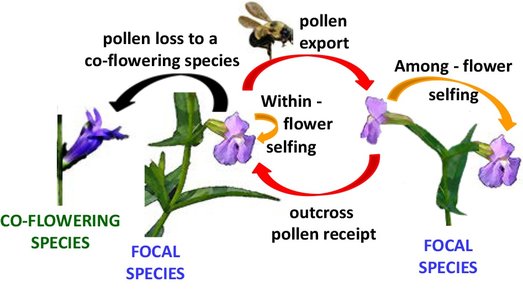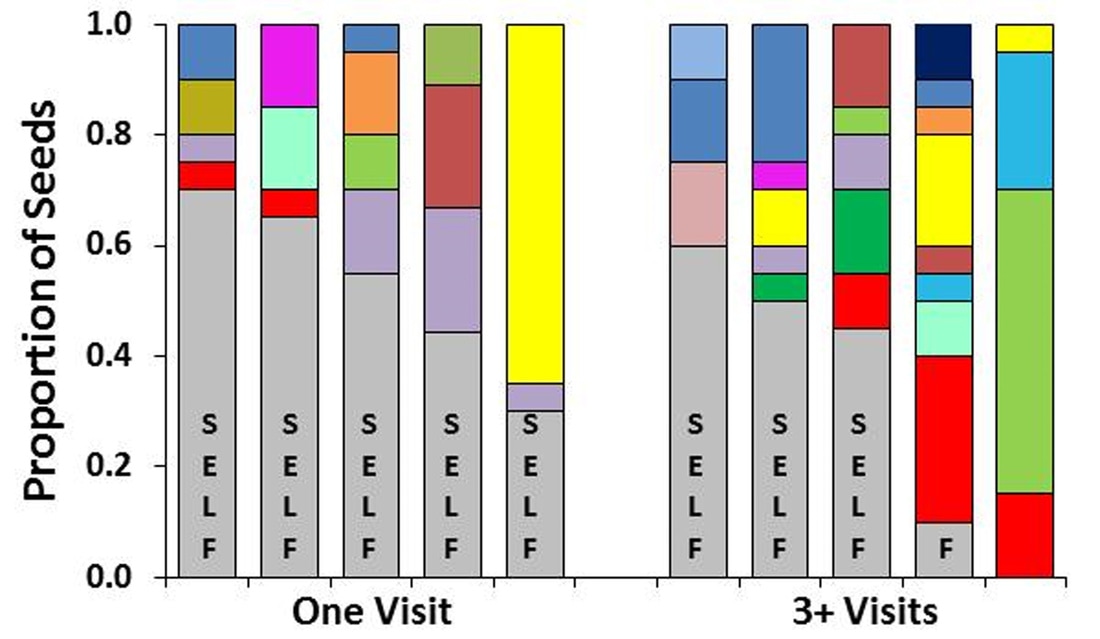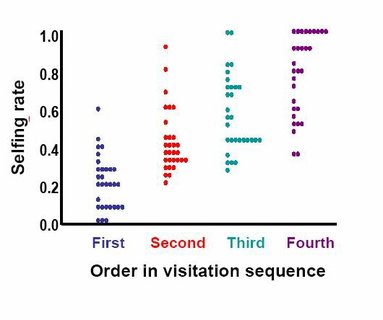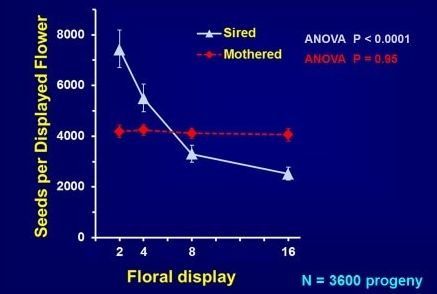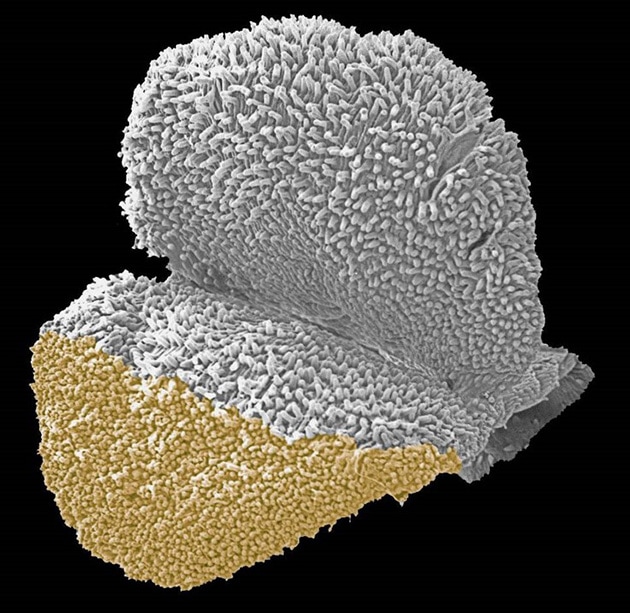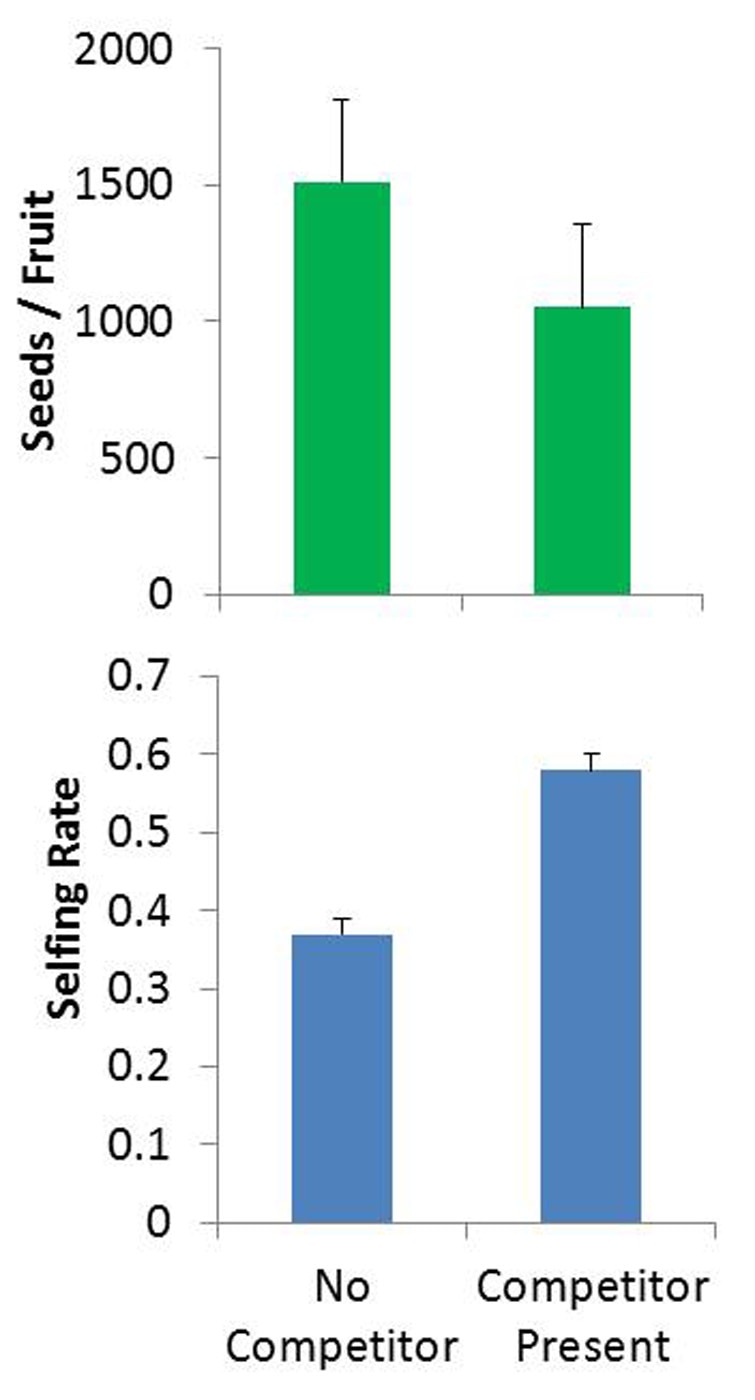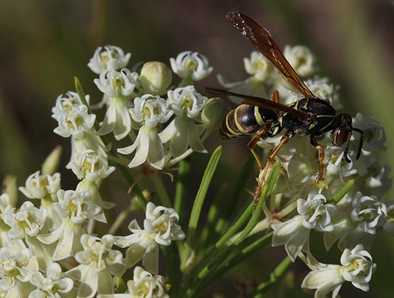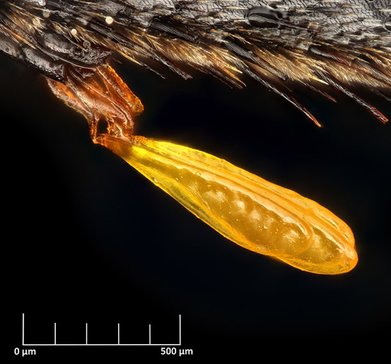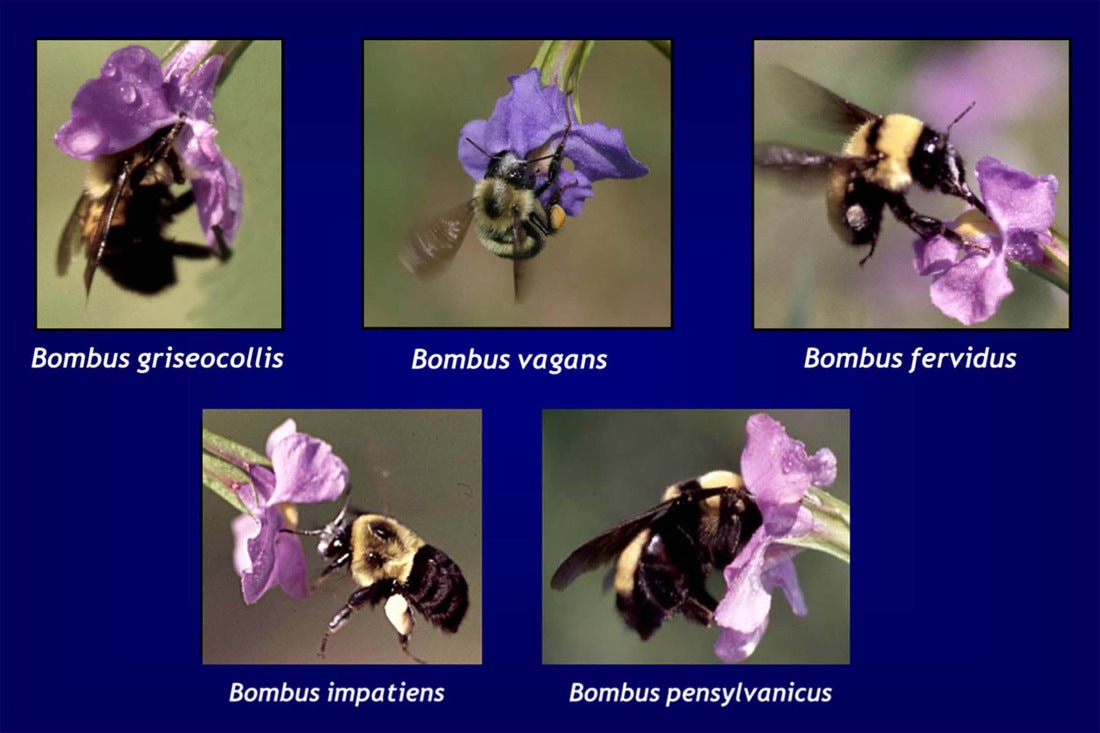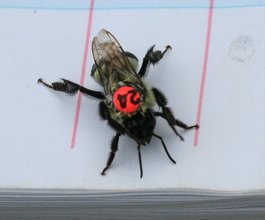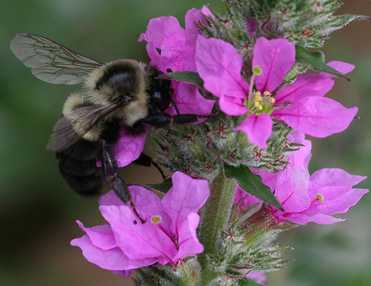|
Karron lab research overview:
Research in the Karron lab focuses on evolutionary processes in flowering plant populations. My students and I are particularly interested in understanding how plant mating systems evolve and how patterns of pollinator visitation influence male and female reproductive success. Our field experiments explore how ecological factors, such as the presence of co-flowering species, and heritable traits, such as floral morphology and floral display size, influence selfing rates and patterns of paternity in monkeyflower (Mimulus ringens). At our study sites in Wisconsin and Ohio Mimulus ringens is pollinated by several sympatric bumble bee species (especially Bombus fervidus, Bombus impatiens, and Bombus vagans). Through the use of genetic markers to unambiguously determine selfing rates and siring success, we have developed an unparalleled data set documenting fine-scale variation in plant mating systems. Our work has shown that selfing rates increase markedly with increasing floral display size, due to the effects of geitonogamous self-pollination (Karron et al. 2009; Karron & Mitchell 2012). Mimulus fruits are typically sired by 3-5 donors, and this high level of mate diversity results both from simultaneous deposition of mixed pollen loads as well as subsequent visits bringing in additional donors not represented in the initial visit (Karron et al. 2006). |
|
|
|
Do co-occuring bumble bee species provide equivalent pollination services for Mimulus ringens? Do these species differ in their effects on the mating system?
The composition of bumble bee species visiting our Milwaukee and Ohio study sites varies markedly from year to year. These species differ in body size, tongue length, foraging behavior, and frequency of grooming. Doctoral student Jason Vizelka has developed an elegant experimental design to quantify the effects of single visits to Mimulus ringens by different Bombus species. Jason has demonstrated that visits by these species deposit different quantities of pollen on Mimulus stigmas, leading to differences in the number of seeds per fruit. He has also utilized microsatellite markers to quantify mating system parameters, and has found that visits by these species yield strikingly different patterns of mate diversity within fruits. |
|
|
How do invasive co-flowering species influence the reproductive success of native species?
Native flowering plants often share the services of generalist pollinators with invasive, non-native species. Rebecca Flanagan (PhD 2009; now Rebecca Delgado) devised an ingenious set of experimental studies which showed that an increase in the relative abundance of invasive Lythrum salicaria (purple loosestrife) lowered seed production of native Mimulus ringens. When a bumble bee forages on both species during a single foraging bout, much of the Mimulus pollen on the bee is lost as the bee grooms while foraging on Lythrum. The extent of pollen loss increases with the density of the invasive species, leading to a marked reduction in Mimulus seed set. Please see the Karron Lab home page for a photo of Bombus visiting Lythrum salicaria. |
|
All images on this web site are protected by copyright. Please contact Jeff Karron if you would like to use them for non-commercial purposes.
